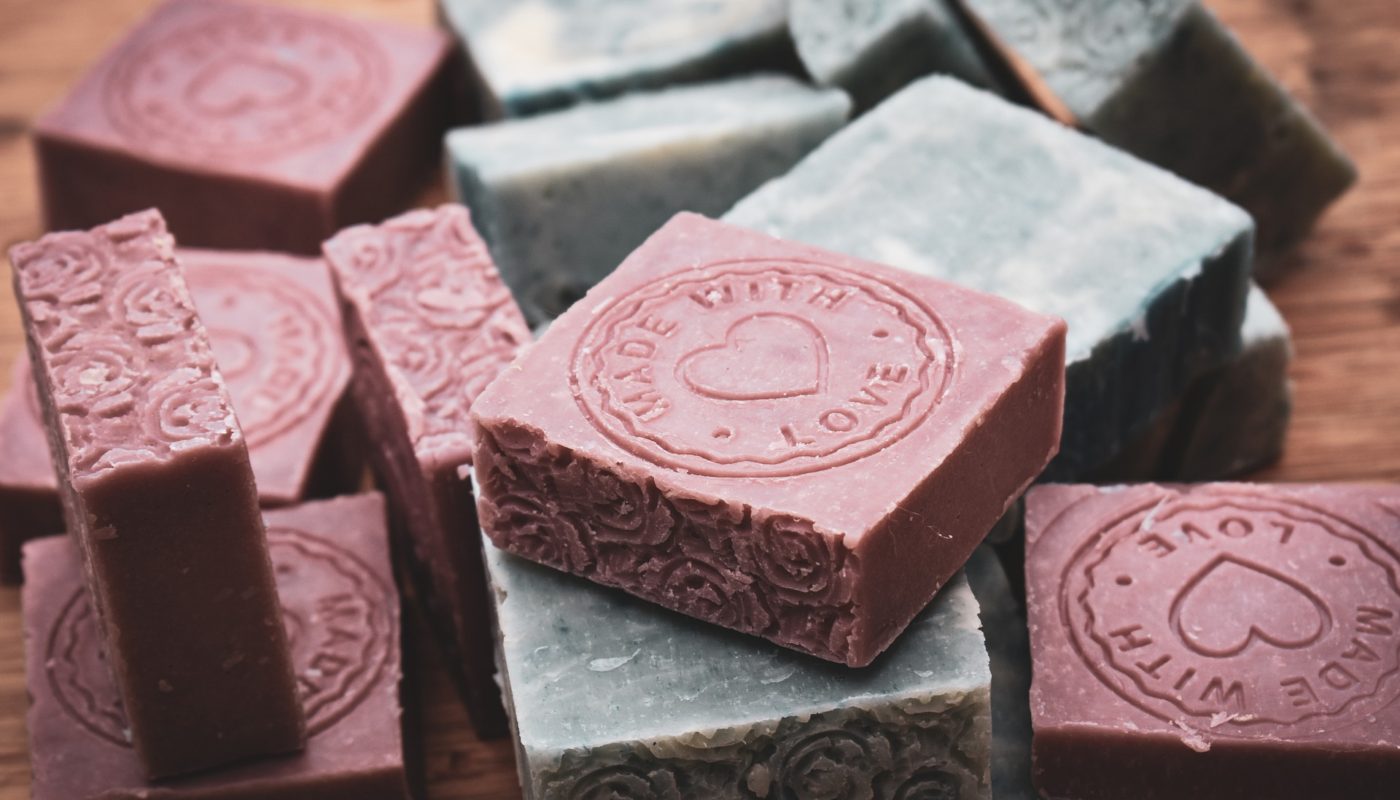Soap making gives you the option of creating your own self-care items and the product also makes a great gift for family and friends. There are countless combinations of ingredients you can use, which really allows you to get creative and have fun with this hobby.
For those who want to keep their process simple and avoid using complicated equipment and chemicals (such as lye), it is best to go with the melt and pour method of soap making. This method involves the soap base being melted in a pan using direct heat and re-solidifies as it cools.
Luckily, most of the equipment required for soap making can be found in your kitchen or easily required. Below are the basic tools and supplies you’ll need to get started with soap making:
Soap Base
The soap base is your raw material and it can come in all different forms but commonly contains olive oil, goat’s milk, or aloe vera. Soap bases are also composed of fatty acids and glycerin. This base is produced through a process called “saponification,” which involves mixing fats and an alkali (such as lye). The resulting substance is allowed to cure for up to four weeks before it’s ready for use. Thus, for beginners, and those who do not want to be exposed to lye, it is best to buy a premade soap base to make the process easier and to cut out the four-week wait time.
Knife
In order to cut the soap base, which comes in large blocks, you will need a suitably sized knife to cut the soap into correct proportions. Additional ingredients such as petals, herbs, and leaves may also need to be chopped before they are added.
Scale
The soap base is often measured by its weight, so a scale is a necessary tool for any soap-making kit. Investing in a quality food scale is advisable as it ensures accuracy and can be used for other activities such as cooking and baking.
Natural and Scented Ingredients
Add any herbs such as lavender, petals, or any other natural ingredients you would like to include in your soap. These components will help give your soap a beautiful scent and aesthetic. Additionally, feel free to add a drop of any of your favorite essential oils to enhance the scent of your soap (just remember less is more when it comes to essential oils, they can easily become an overpowering element).
Heatproof Bowl
A heatproof bowl is needed in order to melt the soap base. Heat-resistant plastic is best but many soap makers prefer to use metal jugs. As long as you are not using lye (which would react with any aluminum present) a metal container should be fine.
Silicone Mold
A silicone mold or a loaf pan lined with parchment paper will be needed to mold the hot soap once it’s poured. This is another part of the process where you can get creative: you can choose molds that are various shapes such as flowers, stars, hearts, or any other shape that suits you. Alternatively, you can keep the soap’s shape simple and let the scent speak for itself and just use a simple mold designed for baking.
Spatula
For stirring the soap and getting every last drop out of the heatproof bowl, you will need a spatula. Plastic or rubber tends to be best as wood easily adheres to the soap mixture.
Table Protection
Soap making can damage all different kinds of surfaces due to the ingredients and temperature required, so it’s best to have something to protect your table such as a durable tablecloth.
Soap making is a fun hobby that is easy to pick up but hard to stop. Once you start, you will find yourself frequently looking around and asking yourself, “Can I make soap with this?”

